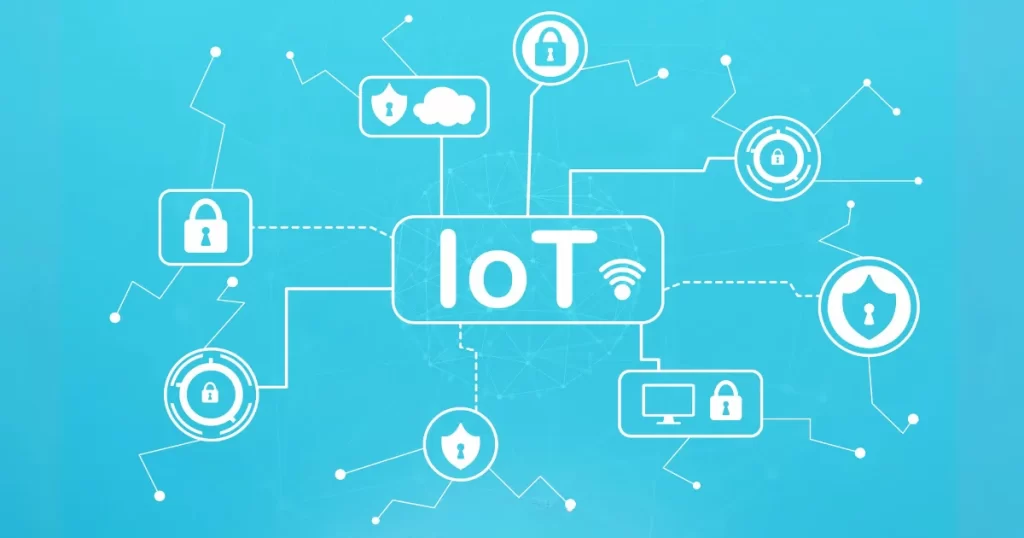The Internet of Things (IoT) is a broad network of interconnected physical objects exchanging data through the Internet. It encompasses devices, sensors, and lightweight applications embedded in tools and devices for data exchange with other devices, applications, and systems.
With billions of connected devices worldwide, IoT is the most prevalent of connected technologies. As a nexus between the digital and physical realms, IoT facilitates seamless and continuous communication for everyday consumer products and intricate industrial systems.
What is IoT Security?
IoT security pertains to various strategies and techniques to shield IoT systems from cyber threats and vulnerabilities. This all-encompassing approach includes safeguarding devices, networks, and the associated data. Achieving this involves implementing rigorous security protocols, adhering to encryption standards, ensuring prompt firmware updates, and employing other relevant measures.
Importance of IoT Security
The scope of the Internet of Things (IoT) extends beyond computers and smartphones, encompassing nearly anything with an on/off switch that can potentially connect to the Internet. This extensive network of interconnected devices holds a significant user data volume, presenting a potential target for theft or cyber-attacks. The more devices connected, the greater the opportunities for cybercriminals to exploit vulnerabilities and compromise security.
Despite the convenience and value derived from IoT systems, the associated risks are substantial. The significance of IoT security cannot be overstressed, considering the vast and accessible attack surface these devices provide to cybercriminals. IoT security plays a crucial role in safeguarding these susceptible devices.

Common IoT Security Challenges
- Default Passwords
A common issue with many Internet of Things devices is using default passwords, which often need strengthening. Customers who purchase these devices may need to know they can and should change these default credentials. Using weak passwords and unchanged login details exposes IoT devices to the risks of password hacking and brute-force attacks.
- Limited Security Integration
Owing to the diverse range and extensive scale of IoT devices, integrating them into security systems poses challenges that vary from demanding to nearly impossible. These devices’ sheer variety and quantity make seamless integration a complex task for security infrastructure.
- Vulnerable APIs
APIs frequently serve as entry points to command-and-control centres, acting as launch pads for various cyber-attacks. These attacks may include SQL injection, distributed denial of service (DDoS), man-in-the-middle (MITM), and network breaches. APIs become vulnerable points that adversaries exploit to execute and coordinate their malicious activities, posing significant threats to the security of networks and systems.
- IoT Malware & Ransomware
With the significant surge in connected IoT devices over recent years, a trend expected to persist, the vulnerability to malware and ransomware attacks has risen correspondingly. Notably, IoT botnet malware has emerged as a frequently observed variant. This escalating risk underscores the importance of robust cybersecurity measures to safeguard these interconnected devices against potential threats.
- Overwhelming Data Volume
The sheer volume of data produced by IoT devices poses challenges in overseeing, managing, and protecting the information. This considerable influx of data can complicate efforts to maintain effective oversight, implement efficient management strategies, and ensure robust data protection measures.

IoT Cybersecurity Best Practices
Following are a few practical solutions you can consider:
- Keep devices updated
Ensure that your IoT devices have regular software updates, applying them promptly for enhanced security.
- Change router name
Customize your router’s name to avoid disclosing personal information, enhancing network security.
- Check privacy settings
Review and adjust your IoT devices’ default privacy and security settings to align with your preferences.
- Disable unused features
Turn off unnecessary device features to minimize potential vulnerabilities and reduce attack opportunities.
- Opt for strong Wi-Fi encryption
Choose robust encryption methods like WPA2 or later for your router settings to secure network communications.
- Change default passwords
Use unique, strong passwords for each device and avoid default passwords to minimize the risk of hacking.
- Utilize strong passwords
Employ long passwords with a mix of characters, and consider a password manager for easier credential management.
- Enable multi-factor authentication
If available, activate multi-factor authentication for added security in accessing your online accounts.
- Identify home network devices
Regularly review all devices connected to your home network, considering upgrades for enhanced IoT security.
- Exercise caution on public Wi-Fi
When managing IoT devices on the go, be mindful of security risks associated with public Wi-Fi and consider using a VPN for added protection.
- Set up a guest network
Establish a separate wireless network for guests with strong protection to prevent potential security threats.
IoT cybersecurity is crucial because the interconnected nature of these devices makes them potential targets for cyberattacks. In the first part of this blog, we already discussed the challenges in IoT security. To address these issues, investing in robust security measures becomes essential.
Top-Notch IoT Security Solutions
Strong security measures help safeguard sensitive data, keep operations running smoothly, maintain customer trust, prevent physical damage, reduce network risks, comply with regulations, and ensure long-term success in the ever-changing digital world.
Green Method, a top cybersecurity company, offers diverse solutions and services. These include data protection, application security, endpoint security, email and browser security, human risk management, managed security services (MSS), SIEM & SOAR, OT/IoT security, network security, access management, vulnerability management, and digital forensics.
For more information, feel free to contact the Green Method team.
